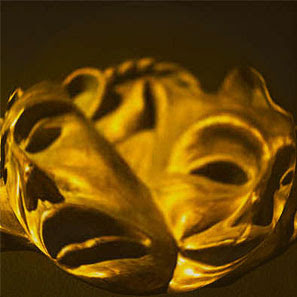 Emotional Freedom Techniques (EFT) is a psychotherapeutic alternative medicine tool based on a theory that negative emotions are caused by disturbances in the body's energy field and that tapping on the meridians while thinking of a negative emotion alters the body's energy field, restoring it to "balance." There are two studies which appear to show positive outcomes from use of the techniques, but another study has suggested that it is indistinguishable from the placebo effect. Critics have described the theory behind EFT as pseudoscientific and have suggested that its utility stems from its more traditional cognitive components, such as distraction from negative thoughts, rather than from manipulation of "energy meridians".
Emotional Freedom Techniques (EFT) is a psychotherapeutic alternative medicine tool based on a theory that negative emotions are caused by disturbances in the body's energy field and that tapping on the meridians while thinking of a negative emotion alters the body's energy field, restoring it to "balance." There are two studies which appear to show positive outcomes from use of the techniques, but another study has suggested that it is indistinguishable from the placebo effect. Critics have described the theory behind EFT as pseudoscientific and have suggested that its utility stems from its more traditional cognitive components, such as distraction from negative thoughts, rather than from manipulation of "energy meridians".Background
EFT was created by Gary Craig in the mid 1990s, and is meant to be a simplification and improvement of Roger Callahan's Thought Field Therapy (TFT) techniques. Craig trained with Callahan in the early 1990s. In 1993, Craig was the first person Callahan trained in his most advanced procedure, a proprietary procedure known as Voice Technology. Craig found through his experience that the sequence of tapping points did not matter and that special proprietary procedures were therefore unnecessary, so by the mid 1990s he had simplified Callahan's procedures.
Theory
Proponents of EFT claim it relieves many psychological and physical conditions, including depression, anxiety, post-traumatic stress disorder, general stress, addictions and phobias. More extreme claims have been made for multiple sclerosis and even "everything from the common cold to cancer.'" The basic EFT technique involves holding a disturbing memory or emotion in mind and simultaneously using the fingers to tap on a series of 12 specific points on the body that correspond to meridians used in Chinese medicine. There are 15 points, if one includes points nicknamed the "karate-chop point," "gamut spot," and the "sore spot," used to enhance the effectiveness of treatment. The theory behind EFT, based on an ancient theory of acupuncture, is that negative emotions are caused by disturbances in the body's energy field and that tapping on the meridians while thinking of a negative emotion or event alters the body's energy field, restoring it to "balance."
The theory states that negative emotions are built in the following stages: A negative experience occurs; negative emotions are felt in response to this negative experience, leading to inappropriate programming inside the body; and then the body's energy system gets disrupted due to these negative emotions. The contention of EFT is that in order to remove the negative responses, tackling the negative experience is not enough, because doing so cannot correct the energy imbalance. Rather, the energy imbalance must be restored along with curing the negative emotions.
The main difference between EFT and TFT lies not in principles, but in application. In TFT, a specific sequence of tapping points (known as an algorithm) is used for a particular problem. This sequence is determined using muscle testing, a procedure also used by applied kinesiology.
In EFT, the sequence of tapping points is deemed to be unimportant, and therefore individual algorithms are not required for different problems. Instead, a comprehensive algorithm is used for all problems, and no diagnosis or muscle testing is required. Fewer than all the points may be needed for a particular problem, but because there are so few, it is deemed not worth discovering which are necessary.
source : en.wikipedia.org










